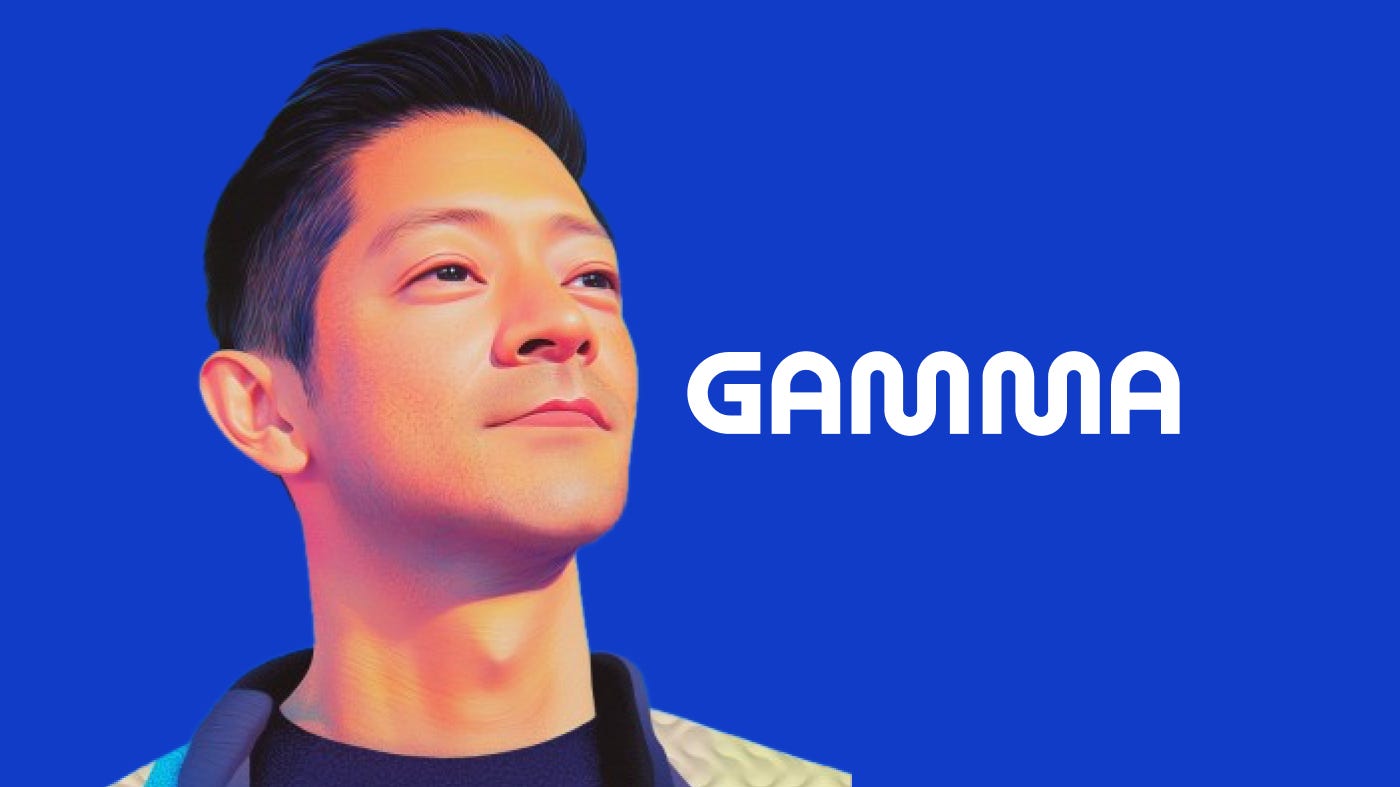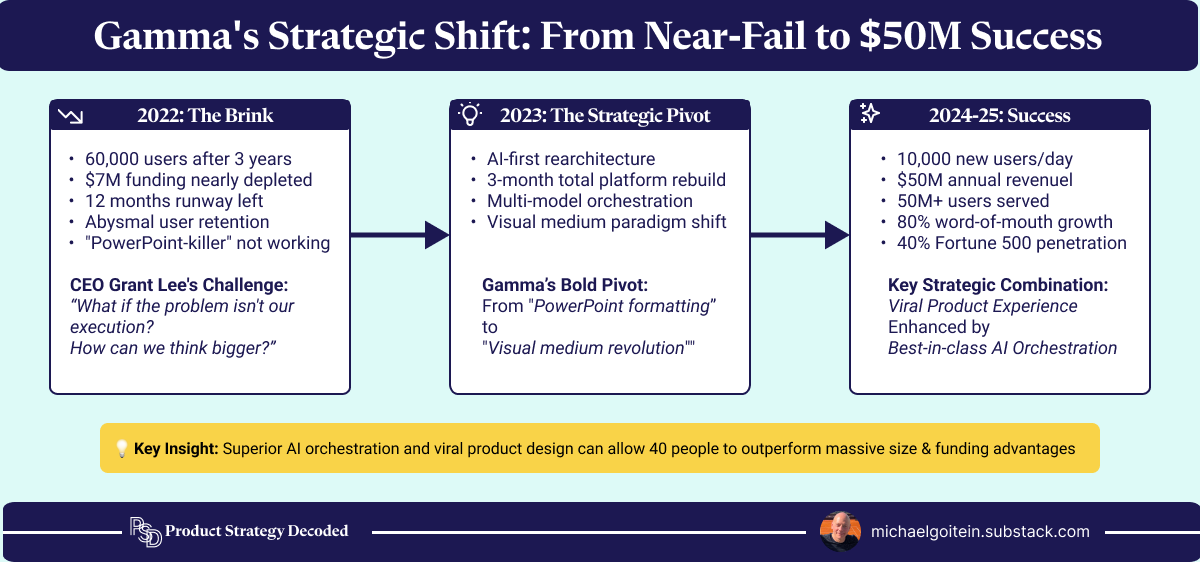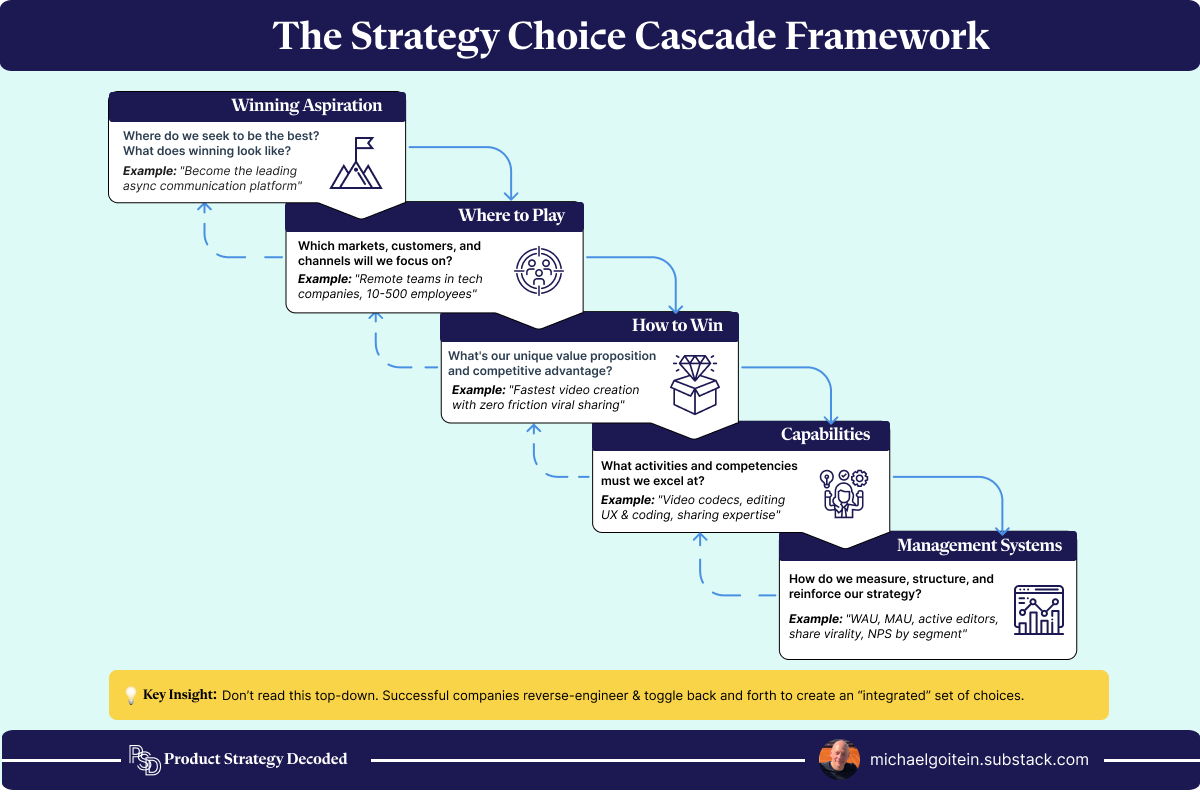How Gamma Pivoted To Build A New $50M AI Strategic Moat And Crush Better-Funded AI-Native Startups
The counterintuitive strategy choices that let 40 employees build competitive advantages over billion-dollar competitors
It's every startup's nightmare: the end is near.
Imagine you're a founder. You've burned through most of your $7 million in funding. After three grueling years of development, your presentation software has just 60,000 users.
Your three-person founding team is staring at bank statements that give you maybe twelve months of runway left, if you’re lucky.
The brutal truth? The market has spoken, and nobody wants your product.
Near-Fail
This was Gamma.app's reality in late 2022.
Three former Optimizely executives who'd mastered growth optimization at their previous company were still trying to crack the code on their own product. But too many users tried their "PowerPoint-killer" tool once, never to return. Retention was abysmal.
Then, CEO Grant Lee made a decision that defied every SaaS startup playbook.
He bet the company's remaining capital on a radical idea:
What if the problem wasn't our execution? How can we think bigger?
"Hail Mary"
Lee's "swing for the fences" bet rebuilt the entire platform around AI in three months, transforming presentations from a “formatting problem” into a fundamental visual medium paradigm shift.
The result? Gamma gained 10,000 new users per day post-launch. $50 million in annual revenue by 2025. (more on how they achieved this with just 40 employees later.)
But here's what makes Lee's bet fascinating from a strategic lens: As they stare down the brink of the abyss, most failing startups either cut costs or chase enterprise deals by stuffing sales-driven “enterprise-friendly” features into their roadmaps.
Lee, instead, applied systematic strategic thinking to redesign Gamma's entire competitive position.
Using Roger L. Martin's Strategy Choice Cascade framework, we can decode the choices Gamma made across five interconnected areas to create sustainable advantages that $81 million in funding couldn't buy its closest competitor.
Gamma’s Genius Strategic Shift
Too many companies adopting AI tend to think in terms of binary, either/or options.
Either build expensive proprietary AI stacks, or connect to existing LLMs to bolt superficial AI functionality onto existing products.
Gamma discovered a third path. They built a genuine competitive moat by developing a sophisticated AI orchestration capability that no one thought could be a differentiator.
Gamma is proving you don’t have to be first-to-market or best-funded to succeed. You just need to make smarter strategic choices around AI integration while mastering the product-led growth basics of viral mechanics and community development.
These Strategic Approaches Can Work For You, Too
The best part about Gamma's orchestration strategy is that it offers a repeatable playbook.
Product leaders can compete against better-funded rivals through AI-aware, superior strategic choices rather than trying to win the feature races.
But Gamma isn’t seeking to play just to “play.”
It seeks to win through three clear choices: AI orchestration mastery, viral product architecture, and community-driven product development and sales.
I’ll include a specific set of implementation tips your team can use to build similar advantages into your products and win with your customers.
But the sooner you get moving, the better.
Implement them properly, and by the time these three strategies get written up in the Harvard Business Review, you’ll already have compounded your own competitive advantages into a moat not even better-funded competitors will be able to bridge.
The Strategy Behind the Breakthrough
Looking at Gamma.app’s strategy through the lens of Roger L. Martin's "Strategy Choice Cascade" framework, I’ll pull back the curtain to reveal how Gamma’s choices are creating advantages in new, emerging, and competitive markets.
Winning Aspiration: Make Beautiful, Effective Content Creation Effortless
Gamma's winning aspiration is to become the dominant platform that eliminates the "blank page problem" in visual content creation.
Rather than building "better presentation software," Gamma instead chose to redefine the fundamental challenge that intimidates content creators across business contexts.
In CEO Grant Lee's own words: "Make content creation feel effortless, whether you have design skills or not."
This ambitious aspiration required precise strategic choices across the other dimensions. Gamma's choice of where to compete directly targets the right people and places to support its democratization aspiration.
Where to Play: Visual Comms for Digital Natives
Geography: Having discovered that visual communication problems are universal, Gamma adopted a global, digital-first approach serving 190+ countries through a single English-language-based platform.
Customer: Individual knowledge workers (founders, marketers, creators, educators, consultants) requiring rapid professional content creation without design expertise. Different from Figma’s strategy we saw earlier, Gamma expands its total addressable market by deliberately not competing for design professionals.
Channel: Direct-to-user self-serve model achieving 80% growth through word-of-mouth. Linked "Made with Gamma" watermarks create natural discovery and adoption, while collaboration features drive internal team expansion.
Product: Single platform generating visual media that combines elements of presentations, websites, documents, and social media content from simple text prompts.
This is like inventing the smartphone when everyone else was trying to make better flip phones. Gamma has fundamentally reinvented what a presentation could be, creating something that can effectively communicate visually across multiple dimensions and even close sales.
Stages of Production: Here's Gamma's most strategic choice. Instead of building its own AI models (expensive, slow, risky), it orchestrates best-in-class external models. Perplexity handles outlines, Claude tackles reasoning, GPT-4 manages visuals. As better models emerge, Gamma is able to switch in days while competitors spend months rebuilding entire integrations.




